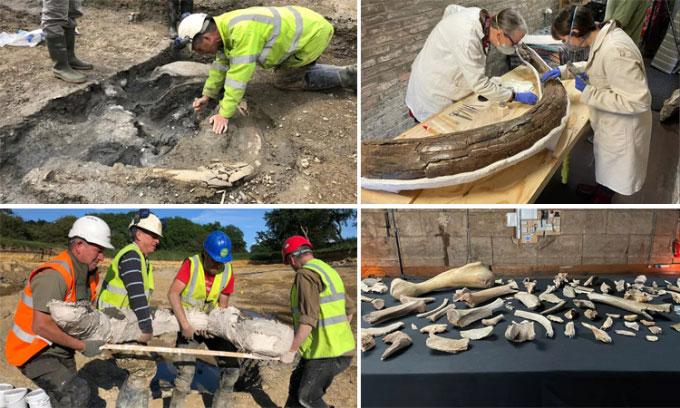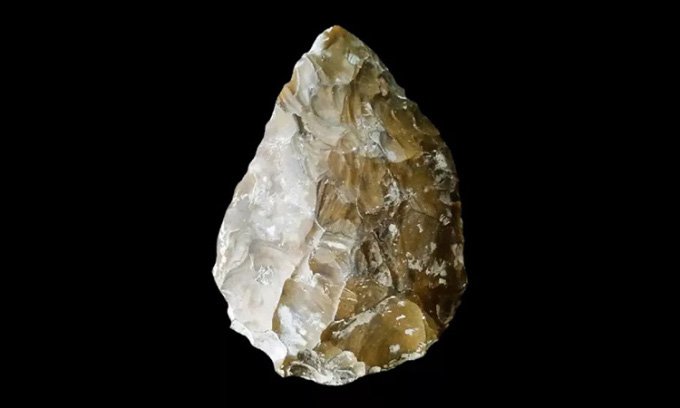Discovered a mammoth cemetery more than 210,000 years old
Paleontologists have found five fossilized mammoth skeletons from the last ice age in southwestern England.

A large number of mammoth bone and ivory fragments have been found in England.
Excavation work was completed last month at a quarry in the town of Swindon, county Wiltshire, more than 110km west of London. Chronological analysis shows that the herd of elephants died 210,000 - 220,000 years ago, when Neanderthals still inhabited what is now England.
In addition to the five mammoth skeletons, including one juvenile, two adults and two juveniles, the team also found many stone tools, such as hand axes and scrapers (used to clean animal skins).
"Finding mammoth bones is always extraordinary. This discovery is made more special because the bones are not only old but well preserved and are located near Neanderthal stone tools," Lisa Westcott said. Wilkins, co-founder of the archaeological organization DigVentures, shared.

Neanderthal stone ax unearthed near mammoth fossil.
According to Wilkins, early mammoths could have grown up to 4m tall, but the two adult specimens found in Swindon were significantly smaller. Their reduced body size is an indication that they were affected by cold weather especially during the last ice age.
Going forward, the team wants to find out why so many mammoths died in the same place and whether the Neanderthals hunted wild animals or just picked up their carcasses.
"Through findings like these, we can better understand life in England more than 200,000 years ago," said Duncan Wilson, chief executive of Historic England, a British historic preservation agency. about the importance of research.
- Discovered mammoth tusks buried for nearly 3 million years on the seabed
- Revealing how extinct 'dodge' mammoths lived for 10,000 years
- 42,000 year old mammoth exhibition
- 15,000-year-old mammoth trap discovered in Mexico
- Mexico discovered ivory 10,000 years before BC
- The 700,000-year fossil suspected to be 'precious' mammoth
- Display of mammoth corpses intact
- Found a cemetery for 1,000 years in Mexico
- Mammoth exhibition 39,000 years ago
- Discovered 10,000-year-old mammoth ivory
- Found a yard of mammoth bones in Serbia
- Study mammoth brain
 Discovered an ancient centipede fossil 99 million years old
Discovered an ancient centipede fossil 99 million years old Discovered bat-like dinosaurs in China
Discovered bat-like dinosaurs in China Discovered a 200-year-old bronze cannon of the coast
Discovered a 200-year-old bronze cannon of the coast Discover 305 million-year-old spider fossils
Discover 305 million-year-old spider fossils